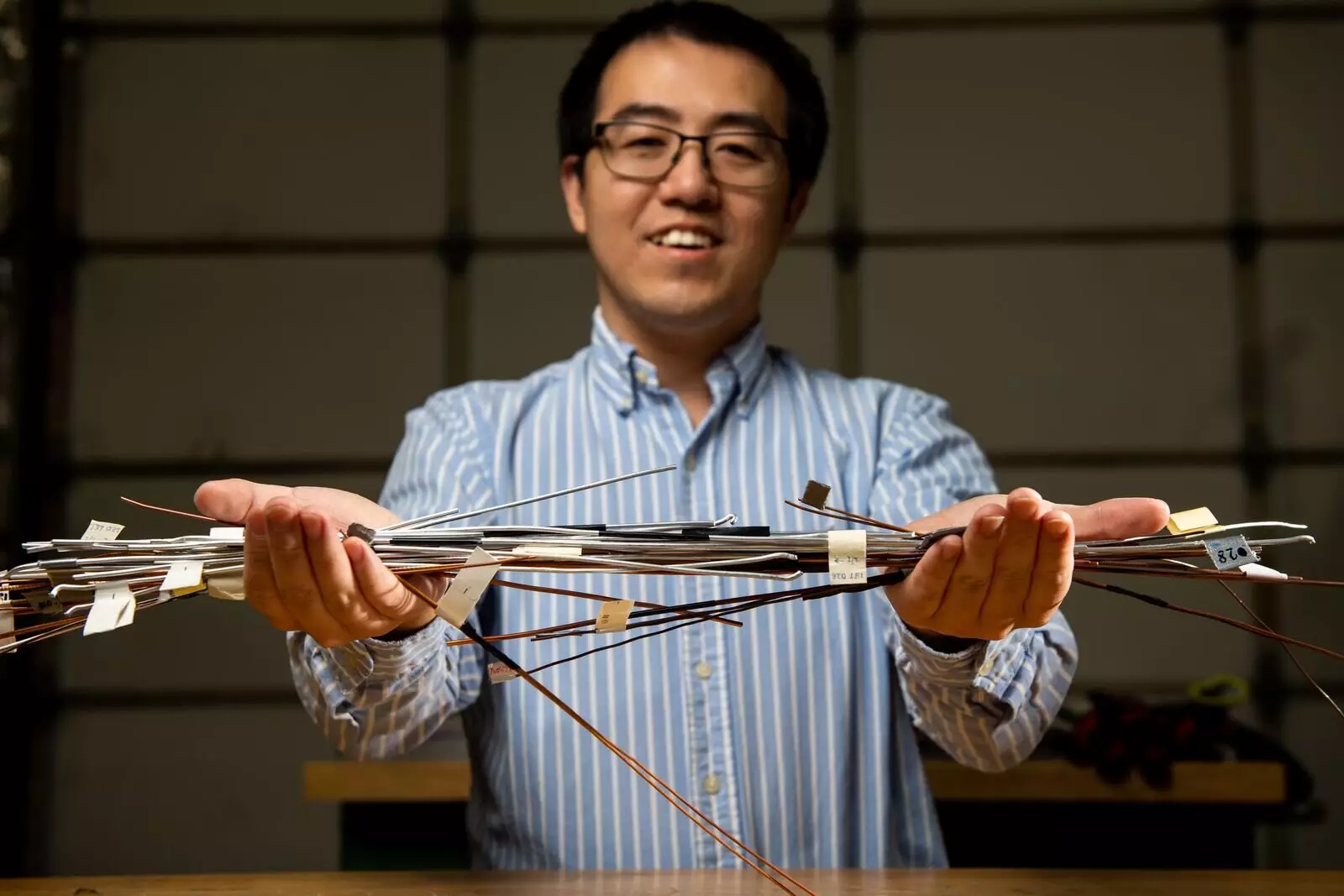In a surprising turn of events, scientists have discovered that a common carbon compound, graphene, when combined with copper in just the right proportion, can significantly enhance the performance of electrical wires. This groundbreaking finding challenges conventional wisdom about metals and their ability to conduct electricity. The implications of this discovery are far-reaching and have the potential to revolutionize electricity distribution and power generation in homes, businesses, and electric vehicles. In fact, the research team has already applied for a patent for this work, which was supported by the Department of Energy’s Advanced Materials and Manufacturing Technologies Office.
Led by materials scientist Keerti Kappagantula, the team of researchers at DOE’s Pacific Northwest National Laboratory made this groundbreaking discovery. By adding just 18 parts per million of graphene to electrical-grade copper using an advanced manufacturing platform called ShAPE, they were able to decrease the temperature coefficient of resistance by 11 percent, without compromising electrical conductivity at room temperature. This breakthrough is particularly significant in the manufacturing of electric vehicle motors, where even a 1 percent gain in motor efficiency can have a substantial impact.
The discovery of enhanced conductivity in the copper-graphene composite defies what is generally known about the behavior of metals as conductors. Typically, introducing additives into a metal increases its temperature coefficient of resistance, causing them to heat up faster at the same current levels compared to pure metals. However, in this case, the addition of graphene resulted in an unexpected increase in conductivity. Through detailed structural and physics-based computational studies, the research team was able to explain this phenomenon. They found that the solid-phase processing used to extrude the composite wire created a microstructure punctuated with tiny flakes and clusters of graphene. These structures appear to be responsible for decreasing the coefficient of resistance of the composite and improving its conductivity.
Potential Applications
The potential applications of this new copper-graphene composite are vast. Anywhere there is electricity, this technology can bring significant benefits. For instance, in the core of electric motors and generators, coiled copper wire forms are typically used. However, these motors have temperature limitations due to the dramatic drop in electrical conductivity at higher temperatures. With the new copper-graphene composite, motors could potentially be operated at higher temperatures without sacrificing conductivity, leading to more efficient and powerful motor systems.
Another significant application lies in the wiring that brings electricity from transmission lines into homes and businesses. As demand for power increases with growing urban populations, there is a need for more conductive wiring to meet the requirements of these high-density areas. The copper-graphene composite wire offers a solution by providing greater conductivity, which translates into energy efficiency savings.
Future Research and Measurement
While the initial results are promising, the research team is working diligently to further customize the copper-graphene material. They aim to measure other essential properties such as strength, fatigue, corrosion, and wear resistance to ensure its suitability for industrial applications. These experiments involve manufacturing wires with a thickness comparable to a US penny, allowing for detailed analysis and assessment of the composite’s overall performance.
The discovery of how graphene can enhance the performance of electrical wires opens up a realm of possibilities for more efficient electricity distribution and power generation. This breakthrough could pave the way for advancements in electric vehicles, industrial equipment, and even everyday household appliances. The research team’s work, supported by the Department of Energy, has demonstrated that unconventional combinations of materials can lead to remarkable improvements in conductivity. As further research and development is conducted, the potential applications and benefits of this new copper-graphene composite will become increasingly evident.



Leave a Reply